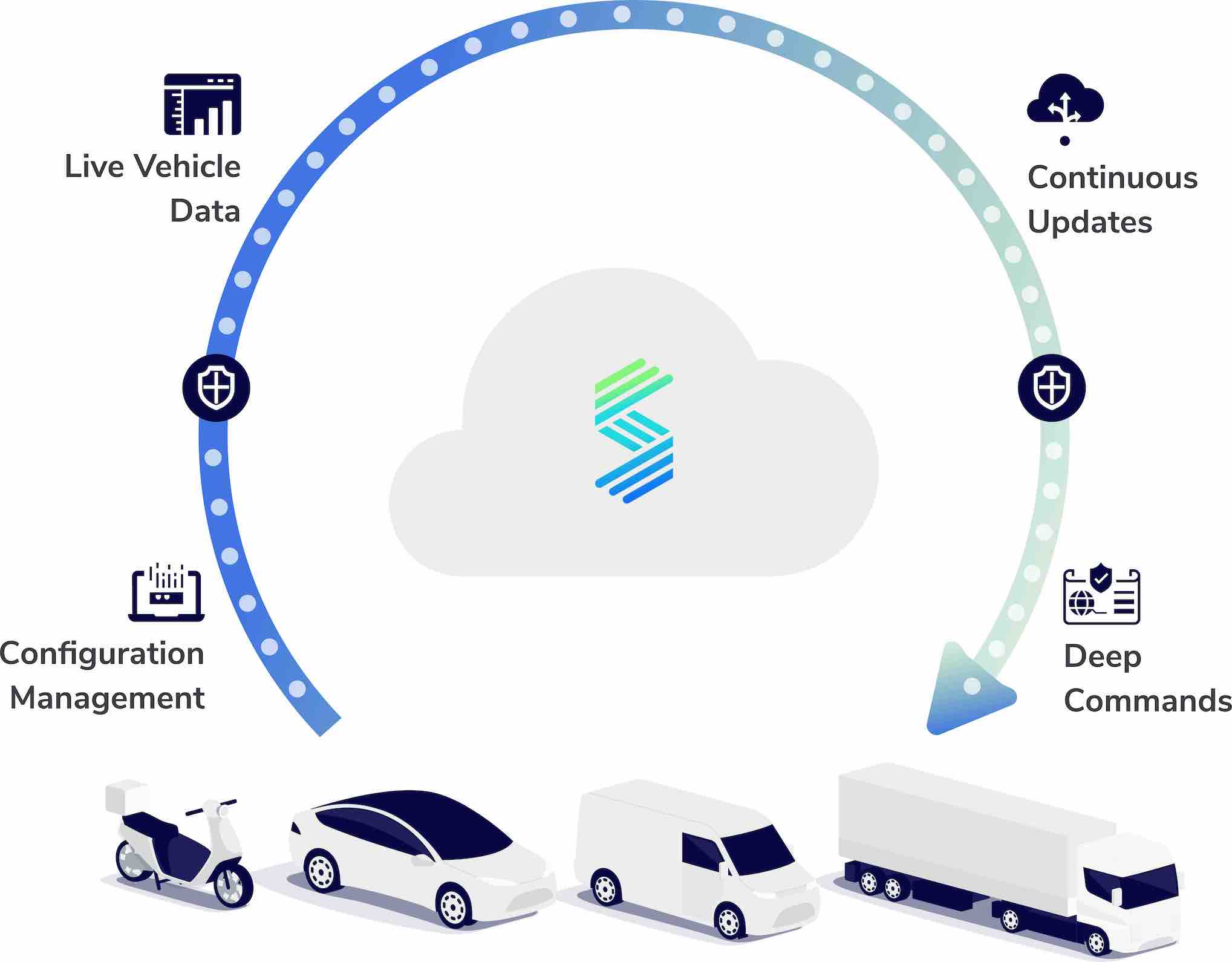Software-defined vehicles on the road to the future

The Situation
“Hardware and internal combustion engine have reigned supreme in the automotive space for more than a hundred years. But a revolution is underway, with change happening on the fast lane: Players who move slowly may find themselves overtaken.”
This decade will see a rapid shift not only to electric propulsion systems, but to vehicles dominated by electronics. The software-defined vehicle (SDV) is speedily gaining traction, and the acronym CASE (Connected, Autonomous, Shared, Electrical) frames the conversation.
The challenges, however, are considerable. An industry that has long seen itself as manufacturing hardware to be purchased by its customers has to undergo the massive metamorphosis to writing software and offering services as subscriptions.
But if the challenges are considerable, the potential is enormous. The move to CASE and SDV opens up opportunities of whole life cycle monetization for OEMs, options to optimize and personalize their vehicles for drivers, and ways to reduce costs and improve performance for the commercial vehicle industry.
Connected Vehicle Technology to Realize the SDV
There are some fundamental requirements to any solution supposed to be an enabler in this space: The solution has to cope with any given model and version of hardware and software because vehicles will incorporate a great variety of those; the solution will have to be safe and secure because new attack vectors may arise and the protection of all road users is imperative; the solution has to be economical because there will be volumes of data in transit and at rest never before seen in the car space.
Sibros’ Deep Connected Platform (DCP) delivers on the three pillars for the connected vehicle: software updates to all electronic control units (ECUs), high frequency data collection from all ECUs, and remote commands to any ECU. We have both in-vehicle components as well as cloud components to make it seamless for every vehicle under any platform irrespective of the hardware specifications. It is the only solution on the market that is hardware agnostic and it is one of the first to be ASIL-D certified according to ISO 26262, the highest functional safety standard for automotive. The DCP, with embedded firmware validated to run on all major telematics control units and gateway platforms and combinations, requires very little memory and CPU capacity and compresses data to save on transmission costs.
Some use cases will illustrate how this comprehensive tool brings modern mobility forward.
Use Cases for OEMs
To a certain extent the engineering departments will have to get used to the fact that their organization is not a core hardware shop any more. This does not only mean that development cycles and other work habits are changing, it is a profound shift that does not come easily. On the bright side, engineering departments will have a whole different data foundation to develop future features. Simulation, for example, with all its problems and pitfalls, can be replaced by billions of data points from real-world use. This enables accomplishments like the reductive design of features that may have been unused, misused, abused before. It may enable the redefinition of battery size for a certain market and it certainly will boost ADAS and related functions, an enormous and impactful market.
A major use case is vehicle as a service. It involves aspects such as the management of vehicle locations, mileage limits, remote roadside assistance, payment services, usage-based insurance, and OTA maintenance. To successfully implement such a business model, information like trip data, driver behavior monitoring, location tracking, and connected diagnostics for remote/assisted repairs needs to be available.
Sibros currently enables a unique business models for European manufacturers such as 16-tonne all-electric freightliner, luxury vehicles with an ambitious goal of 100% software updates and data logging for production vehicles. To this end, the Deep Logger and Deep Updater embedded components were deployed and preproduction and production cloud environments set up. Command Manager serves for remote safety critical functionalities.
Further examples of use cases of different scale and impact are:
- ADAS performance – Improvement using real-world vehicle data
- Reductive design – Elimination of underutilized features or functions with usage insights
- Predictive maintenance – Correct prognostics with data about actual usage and parameter deviations
- Rapid prototyping – Remote validation and testing
- Usage-based insurance – Adjustments based on stats of actual driving
- Recall campaign orchestration – Accelerated recall campaign notification and remedy times with targeted vehicle group OTA software update rollouts.
Such use cases can be implemented with very little effort because Sibros’ product provides 95% functionality out of the box, with only 5% integration necessary.
“Sibros’ platform is neither limited to a certain propulsion nor to a certain vehicle class. From sporty electric 2-wheelers to heavy machinery with fuel cells, and everything in between, Sibros solutions integrate seamlessly and Sibros offers vehicle configuration modeling capabilities to help organize fleets and address countless use cases”
For example, the largest e-bike operator in North America set out for the world’s best shared e-bike, equipped with Wi-Fi and GPS. Riders can locate e-bikes in an app; the operator can issue over-the-air firmware updates, track stolen bikes, and monitor hardware and firmware states in real-time. Sibros provided the platform to ingest, visualize and extend fleet data usage. Highlights are superior data compression, a debugging tool for faster fault identification, and real-time selective data logging.
Use Cases for End Users
Additionally, the DCP allows to add functionalities and value-added services for end users and drivers. Examples of such use cases are:
- Vehicle personalization – Drive mode options like sports, eco, comfort, or snow; adaptive air suspension; ride and cabin preconditioning
- Battery configuration – High range, high power, etc.
- Digital experience – Payments for fuel, recharging, etc. via IVI system or app
- Remote functions – Lock/unlock, immobilize the vehicle, etc.
- Personalization as per VIN – Personalization settings by the end user specify post-production software updates, calibration updates, and configuration changes
For these purposes, Sibros provides a product that is highly modular and flexible and, as a Software-as-a-Service (SaaS) solution, allows every customer to profit from the experiences and improvements derived from the work with all customers.
About Sibros
The cousins Hemant and Mayank Sikaria founded Sibros 2018 in the belief that automotive OTA will redefine transportation. Sibros’ DCP is designed to be a building block of the road into a cleaner, safer, and more sustainable automotive future for everyone. The organization with main offices in Pune and Silicon Valley is winning awards, signing new customers and recruiting excellent people to make SDVs practical.
“Our customers streamline outdated procedures, reduce product time to market, eliminate aftermarket costs, and, most important, innovate rich new features. We are determined to set an example of how OEMs and software partners will shape the future together“
Author:

Shivalik Prasad, Vice President, Strategic Alliances & Sales, Sibros
He is currently helping build the new Automotive Software platform across global OEM. Building an eco-system around new technologies specially around the Cloud/Internet and Mobile technologies. He has build maps navigation and GPS products for 18 automotive OEM. He has closely worked with the worlds top 5 tech companies from Bay Area and helped them launch India products and delivery centres. In his previous role, he helped scale Mapmyindia in terms of revenue and large enterprise customer acquisition for over a decade.


